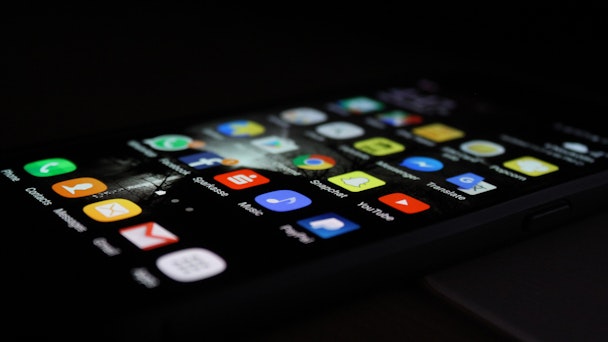We hear it a lot in the world of advertising and marketing

What it means for brands can be a lot of different things, but to understand what social-first is, it’s important to first understand what ‘social’ means as it can be different for everyone.
When you hear ‘social’ in the context of advertising and marketing, your mind (and many others) more often than not will jump to social media—a crucial part of the marketing process and funnel. But, understanding social media is much more than how it’s been adapted for marketing. Understanding social is understanding people’s—social—behaviours.
Social-first is about starting with behaviour
Social is the communication between people, people to brands, moments and their environment. Social-first is not social media first, it’s understanding the behaviour first.
At its core—and by definition— social is about conversations and communities. How we interact with them, the role we play in them, how they help connect us. We communicate with each other, with brands, and with ideas.
It used to be that brands relied on traditional media such as print publications, TV, and OOH advertising; they're now focusing more and more (if not more or less converted) to digital and social media channels to build brand equity, grow awareness and increase their customer base. One of the ways Hey Honey is doing this, is by harnessing the power of data.
Where in the past data was assumption-based, now they’re able to look at real-time numbers. They know who their audience is and they know what they like and because of that, they can tailor their marketing strategies and campaigns to speak directly to them. This all plays a huge part in how brands can market to their potential and existing customers and build loyalty and conversion.
With social-first marketing, ads are created with a customer’s social behavior in mind to elicit a response—or, engagement. Based on a brand’s business goals, content and campaign strategies are developed. Do you want someone to watch a video? Share a Reel? Click over and buy your product from your site? Or, do you want to raise more awareness and grow your reach through entertaining TikToks and influencer collaborations?
By thinking social-first, you’re able to position your marketing initiatives where your customers are—on social media. In fact, a lot of brands are now leading their marketing and OOH strategies with their social first learnings. A perfect example of this is Glossier.
Olivia Rodrigo Beauty Collection with Glossier/ Variety
Long touted as one of the best brands at harnessing the power of social, Glossier was born from social engagement. Launched from the success of digital blog Into The Gloss, founder Emily Weiss used the power of community and social media to elevate her brand to one of the top selling DTC beauty brands in the world.
Glossier is known for leveraging its community and WoM to grow across social first—70% of their content is UGC from their customers and ambassadors (a social program where customers could leverage their social followings to earn points toward purchase). And in fact, everything from their billboards, to their OOH, to their store openings are approached through a social-first lens and themselves become impressions opportunities.
Glossier isn’t the only beauty brand that has made waves in recent years. e.l.f. Cosmetic jumped from the number four favorite beauty brand amongst Gen Z to the number two and finally surpassed Maybelline to be the number one. Their secret? Using data to inform their strategies all with a social-first approach.
Not only were they one of the first beauty brands on TikTok, they’re now harnessing the power of social and their audience to elevate their brand even more and are the first beauty brand on Twitch.
Beyond beauty, fashion and media brands are also harnessing the power of social to elevate their brands further…
Woo – the media culture brand and marketplace backed by ITV / ITV Pressroom
Launched by ITV last year, Woo is set to woo the Gen Z audience through e-commerce and wellness content. Not even a year on the market and they’ve already leveraged social media to generate 1 billion impressions on site and 32m video views across their different platforms. Whatsmore, they have over 1.6m followers across their platforms and with 15m+ engagements, their average ER sits well above other youth media brands hitting 2.4% on average.
Likewise, Jungle Creation’s Twisted—a recipe and food-based media site—uses inspiration to convert their audience to customers. Posting multiple times a day to their over 5.6m followers on IG, 74% said they’ve gone on to buy products they saw featured in videos while 62% said they went on to create recipes they viewed.
On top of those robust stats, the brand sees a 100% purchase intent in response to their campaigns across their social channels.
But when it comes to brands really tapping into their communities, no one does it better than Crocs.
Justin Bieber Launches Crocs Collection / CNN
After getting the Vogue seal of approval Crocs leveraged their press coverage by tapping into previously uncharted communities. They teamed up with mass celebrities like Justin Beiber, Diplo, Post Malone to name a few for collaborations; and collaborated with luxury fashion houses on exclusive designs. Who can forget the heeled Crocs Balenciaga put out or the gemstone Jibbitz-covered ones they did with Christopher Kane?
But, they didn’t stop there. Seeing how diverse their audiences were, they also teamed up with popular lifestyle—and food—brands. Scented KFC Crocs, glitter-encrusted Benefit Cosmetics ones, and even a Peeps version that is so rare, some pairs resell for upwards of $1,000.
On top of their partnerships with celebrities and brands, Crocs also boasts a robust ambassador program in all their markets, a strategy that has proven nothing but successful in growing their international customer base.
While it is no secret that social media plays an important role in a brand’s marketing strategy, truly being social-first is so much more than just a social media strategy. If you think about 'behavior-first' then social media's role in your marketing communications becomes more than just a channel but the starting point. If you understand the data behind your customer's behavior, trends, how they communicate - from there, your strategy is going to be informed by current and relevant insights for more effective online and offline campaigns.
Now, using a social-first approach to online AND offline. That's a whole article in itself.

